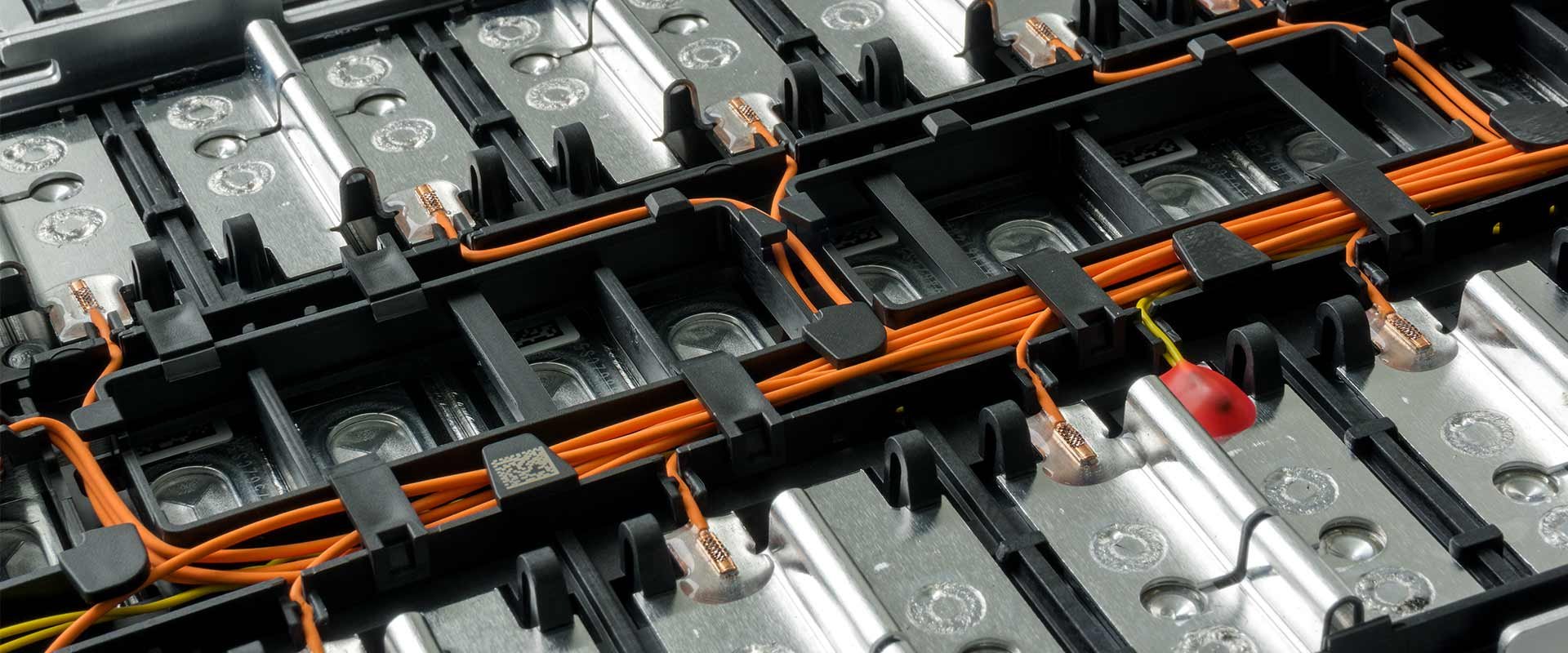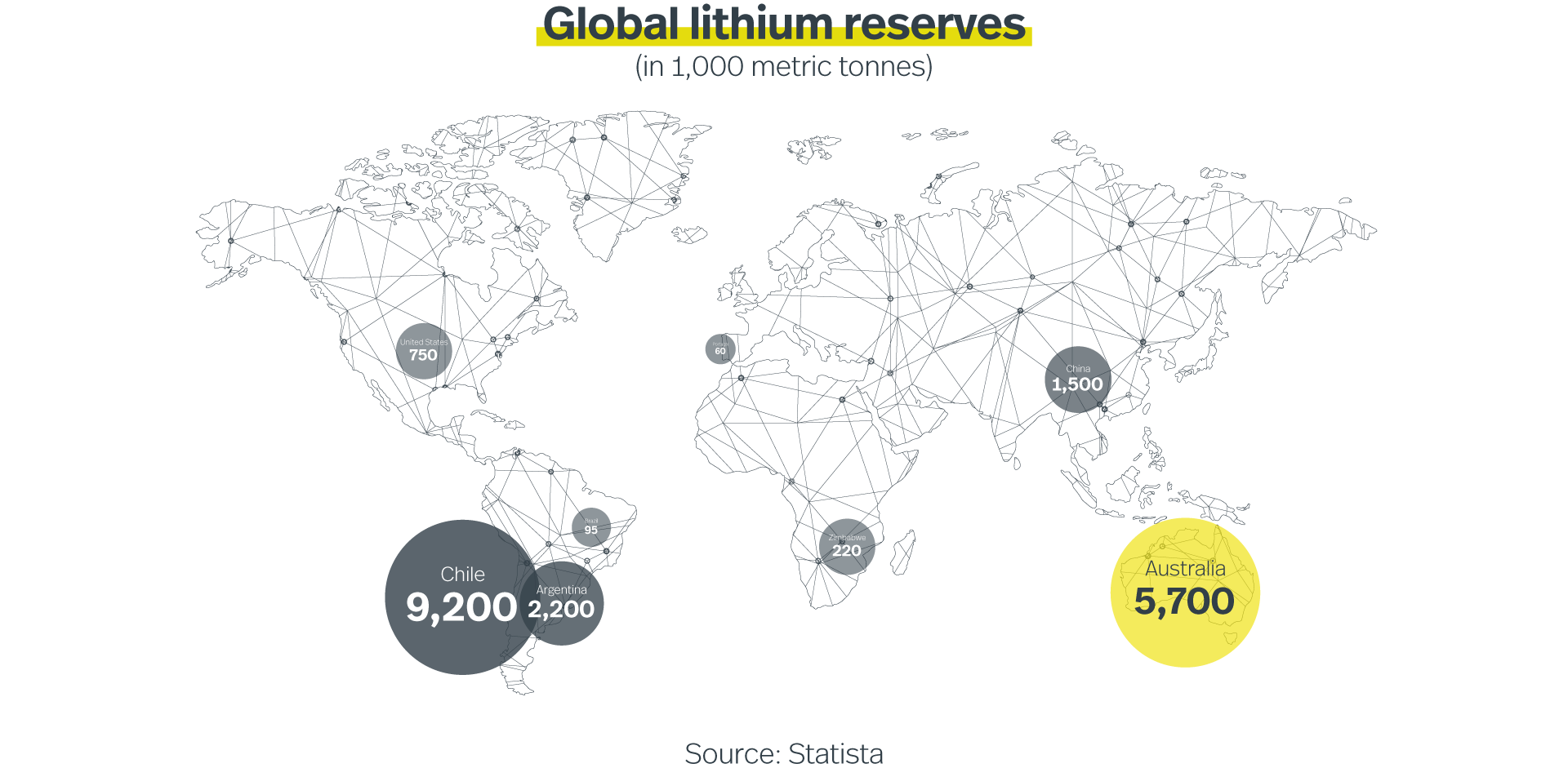Lithium: the ‘white gold’ of our renewable future
Mining

Mining
Dubbed the ‘white gold’ of the future for its essential role in the development of electric vehicles, lithium is a unique metal with a range of fascinating properties. Read on to learn how it’s used, where it’s mined and what the future holds for this one-of-a-kind metal.
Pure lithium is so soft it can be sliced with a butter knife. It is the lightest metal and has the lowest density of any metal, allowing it to float in water. Shiny and grey in appearance, lithium flares bright crimson when thrown into fire. This flashy reaction was in fact how the first lithium petalite was discovered by Brazilian mineralist Jozé Bonifácio de Andralda e Silva in the 1790s on the Swedish island of Utö.
It took until 1855 for someone to isolate the metal entirely: British chemist Augustus Matthiessen and German chemist Robert Bunsen were able to do so by running a current through lithium chloride to separate the element. Modestly named from the Greek word lithos, meaning ‘stone’, lithium has become one of the most important commodities of our future – a key metal supporting our transition to a sustainable and digital future.

What do batteries, mental health and fireworks all have in common? They can all be improved by lithium.
It’s safe to say the era of electric vehicles is upon us, with predictions that two-thirds of Australians will be driving electric cars by 2028. Lithium batteries are strongly favoured in the electric vehicle industry, offering double the capacity of non-lithium batteries, in addition to faster charging capabilities, longer life and a safer and lighter alternative to other metals.
Continued improvements to lithium-ion batteries mean they are likely to continue dominating the market: they are now 30 times cheaper, and far more efficient, than when they first came to market in the early 1990s as small portable batteries.
In addition to electric vehicles, lithium batteries are used extensively for portable electronic devices, such as computers, mobile phones and rechargeable power tools.

A lesser-known application of lithium today is as a treatment for mental health. Lithium carbonate, most often sold as a pharmaceutical, is a common treatment of bipolar disorder and manic depression, helping to stabilise and boost mood. Studies have even found that lithium in drinking water correlates with lower levels of suicide, although psychiatrists are careful about prescribing lithium in high doses, due to unknown effects it can have on the body (particularly on a developing foetus during pregnancy).
Lithium has a broad range of other uses in our modern world, encompassing both chemical and technical applications. It is used to make soap and lubricant greases, to produce heat resistant glass and ceramics such as stove tops, and to manufacture aircraft. It is also used to make fireworks: lithium mixed with strontium salts and other chemicals creates a vibrant red colour upon combustion.
The world is leaning heavily on this important metal to support our future. Where is it mined and is there enough supply to meet demand? Lithium comprises a mere 0.0007 per cent of the earth’s crust and is not found in its elemental form but rather produced by electrolysis of ores, making the mining of it a difficult process.
Chile has the largest reserves of lithium in the world by a wide margin, measuring 9.2 million metric tons in in 2021. Australia ranks second, with reserves of around 5.7 million metric tons and Argentina came in third with 2.2 million metric tons in 2021. Despite ranking second in reserves, Australia led the world in lithium mine production in 2021, with an estimated output of 55,000 metric tons.

For now, lithium has a bright future in Australia. Surging demand, driven primarily by the use of lithium batteries, plus an abundant supply and adequate infrastructure in place to mine this resource means Australia is well placed to reap the benefits of lithium over the next decade or so. However, like all metals, lithium resources are not infinite.
According to estimates, we may run out of the metal as early as 2040 or as late as 2100. Hopefully by that time, we have found other sources of renewable energy, or developed the technology to recycle lithium batteries. Either way, lithium is an important stepping stone, or lithos, on our journey to a renewable future.

Brunel's mining industry experts can support you to successfully identify, attract and deliver skilled blue and white-collar personnel and solutions matched to your business’ unique requirements. Whatever complexities you face, Brunel is here to simplify them.